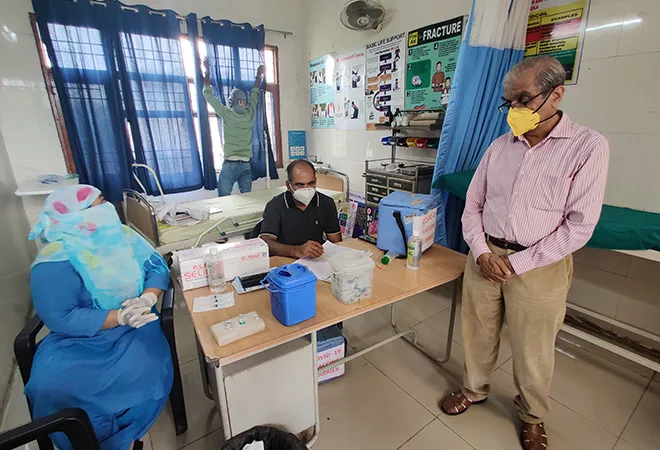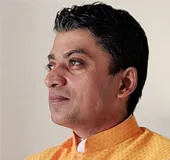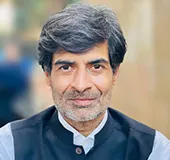
This article is a continuation of a previous article written by the authors,
Revisiting Orientalism: Pandemic, politics, and the perceptions industry
In Lord Byron’s poem, Childe Harold’s Pilgrimage (1812), the protagonist Harold, contemplating the grandness of the Colosseum, imagines the condemned gladiator, dignified yet forlorn, butchered for the entertainment of a boisterous, blood lusty Roman crowd out on a holiday.
Public spectacles of suffering are integral to the discourse of power. The perverse imagery and messaging surrounding the suffering seeks to intimidate and suppress the subaltern’s agency to perpetuate ethnic dominance and social control. It pivots around an elevated moral sense of the ‘self’. In his seminal work, When Bad Things Happen to Other People, John Portmann argues that it is not unusual to derive gratification over the suffering of the ‘other’, particularly when the native feels that the suffering or humiliation of the ‘other’ is deserved. The suffering then becomes fair recompense for transgressions real and imagined, and the accompanying sense of justice and closure brings forth feelings of gratification.
India is reeling in the aftermath of the second wave of COVID-19. As death reaps rich dividends cutting across class and covenant, the country is engaged in a determined fightback. The developments have made global headlines, and, in equal measure, triggered global concern. Apocalyptic images of mass pyres and victims in their death throes, replete with tales of ineptitude, profiteering and callous attitudes, have made front page news and have become television primetime in much of the trans-Atlantic press, conforming to reductive stereotypes that have informed three centuries of relations with the Orient. The ‘self-inflicted’ suffering is then ‘fair recompense’.
Advancements in communication technology and the lightning speed at which it enables information exchange globalises the impact of the local. Video clips and images of India’s journey through the new wave have found their way across the world through the internet, with social media providing further amplification. Sensational images and crafty storytelling beamed directly into drawing rooms worldwide are engaging remote, unconnected audiences in complex socio-political discourses in distant lands.
Advancements in communication technology and the lightning speed at which it enables information exchange globalises the impact of the local. Video clips and images of India’s journey through the new wave have found their way across the world through the internet, with social media providing further amplification
Representations of the Indian experience, however, are in stark contrast to the reportage of domestic pandemic crises, where solidarity, calls to action and trite nationalism usually made up the reporting frame. Manifest was the visible duplicity of sections of the western media elite and their usual smoke and mirrors as they sought to delegitimise the ‘distant other’ by resorting to innuendo and misery porn. This is, however, not very different from the experience of their ‘near other’—domestic subaltern populations who share common physical and emotional spaces with dominant groups, but remain marginalised socially, politically and economically, on account of differences in caste, class, colour or culture.
Philip Dray in his book, At the Hands of Persons Unknown: The Lynching of Black America, writes on this delegitimisation; on how entire families came out in their Sunday finery for public lynchings of Black men. These events, he writes, were akin to village fairs complete with celebration and social bustle; food and drink; and commemorative pictures and macabre souvenirs, often a body part of the hapless lynched man. Howard Smead explains that, more often than not, the victims were not accused of any crime, rather the act of lynching had become a ‘symbolic rite in which the black victim became a representative of his race and, as such, disciplined for more than a single crime… The mob in its deadly act warning the black population not to challenge the supremacy of the white race”. Much like the gladiator’s gory death in the Colosseum’s grand arena titillated the raucous Roman crowds out on a holiday, the death throes of the defenceless Black man being tortured, disembowelled and burnt alive sated the blood lust of white supremacists.
The lynching era has long ended. However, it did not end the attitudes that drove it in the first place. The deaths of George Floyd and other individuals of colour at the hands of white officers lays bare the deep fault lines in race relations.
Now, as then, more significant than the events that fuel the actual reportage is the graphic propaganda surrounding it. This serves to agitate the mind of audiences to think and act in specific ways. The silent and yet celebratory discourse on India, a country ravaged by the second wave, had one subliminal message: The virus has shown you your place; how could you even dream of doing better than the ‘civilised west’ in your response to the pandemic?”
Raghu Rai argues that western photojournalists, in particular, are motivated to scrounge provocative pictures from India due to their particular appeal among international juries. Heart-wrenching stories of depravation and despair seen and told from elitist perches often hide the dark and exploitative underside of unbridled careerism and the quest for instant fame. Award winning Italian photojournalist Alessio Mamo’s ‘Dreaming Food’ photo series, set in villages in Madhya Pradesh and Uttar Pradesh, involved keeping a table of photo-friendly ‘fake foods’ in front of poor and hungry children, who were asked to close their eyes and dream of what they wanted on the table in front of them. The minutiae of the coloured man’s suffering beamed live on TV and social media provide every bit the visual spectacle and titillation of the excitable and souvenir-hunting lynch mob, in contrast to the white man’s inviolable right to dignity and privacy. They bear testimony to the solemn reality that racial fault lines not only remain wide and deep, but racial stereotypes inform and guide attitudes to the day.
Admittedly, the marginalisation of the ‘near other’ is by no means a uniquely western affliction. Elites of the global south have normalised deprivation and poverty in their own backyards. They remain oblivious to the compelling iconography of despair as they zoom past shanty towns in their big, shiny cars and Chinese-built high-speed trains. The marginalised remain routinely excluded from power structures and policy frameworks, which are engineered to serve elite consensus. The pandemic has laid bare the deep schisms within these communities, exacerbating the rich-poor gap and class and caste divides. While the poor and marginalised have borne the brunt of the pandemic, on the back of loss of employment and lack of access to quality healthcare; the elite have galvanised their efforts to protect their wealth and health, even crisscrossing continents to get vaccines of their choice.
The marginalised remain routinely excluded from power structures and policy frameworks, which are engineered to serve elite consensus. The pandemic has laid bare the deep schisms within these communities, exacerbating the rich-poor gap and class and caste divides. While the poor and marginalised have borne the brunt of the pandemic, on the back of loss of employment and lack of access to quality healthcare; the elite have galvanised their efforts to protect their wealth and health, even crisscrossing continents to get vaccines of their choice
India’s national spirit, however, is also defined by its boisterous democracy, which is a unique interplay of its assimilative community structures, assertive media, aware publics and vibrant polity. The articulation of a singular Indian identity by celebrating—rather than subsuming—the hundreds, perhaps thousands, of regional and sub-regional identities, emblemised by the ‘Unity in Diversity’ catchphrase, is unique and distinct in the annals of modern-day nation states. It is this transcending spirit that spurred large-scale community mobilisation, which played a significant role in blunting the impact of the pandemic in India. This was a unique Indian experience, different from others that pivoted around official response mechanisms.
The story of service and sacrifice, of healthcare workers who laid down their lives at the altar of duty, of ordinary folk who gave up their life’s savings to help those in need, of neighbours who spent sleepless nights keeping vigil in their communities, of youth who volunteered to run errands for the sick, of the ordinary police official helping people struggling outside hospitals, and of just about any Indian with a smartphone who was part of one or the other social media COVID support group—this is the real story of India that also needs to be told, even if it cannot titillate audiences that seek a certain narrative from the dark despair of the developing world. It would have been a story of hope and resurgence, and of the community’s capacity to overcome seemingly insurmountable hurdles by its indomitable spirit. The state was overwhelmed by the ferocity of the virus; the frail state capability exposed and laid bare. The community that rose in its stead is a tale for the ages; the people that responded and even carried the state in those dark days are and will become legends for generations to come. Instead, a combination of editorial prejudice, regurgitation of stereotypes and irrational conflation of domestic debates with a vastly different Indian experience, not only diminished the discourse around India’s COVID response but also weaponised differences.
A combination of editorial prejudice, regurgitation of stereotypes and irrational conflation of domestic debates with a vastly different Indian experience, not only diminished the discourse around India’s COVID response but also weaponised differences.
“To see others suffer does one good, to make others suffer even more <…> Without cruelty there is no festival,” said Nietzsche. Changing patterns of readership compounded by anesthetisation of audiences due to round-the-clock exposure to stories of violence and conflict, leads to a vicious circle where suffering gets increasingly dramatised to attract and retain eyeballs. The tribulations of the ‘distant other’ are particularly distorted, as they do not bear the scrutiny of lived experience. Biases, presuppositions and stereotypes, which inform understanding of the ‘other’, offer the perfect framework for such dramatised representations. The coverage of India in the month of May was a mini-series that was insensitive, commercialised and entertainment akin to the Sunday lynchings of times past.
The views expressed above belong to the author(s). ORF research and analyses now available on Telegram! Click here to access our curated content — blogs, longforms and interviews.



 This article is a continuation of a previous article written by the authors,
This article is a continuation of a previous article written by the authors,  PREV
PREV



